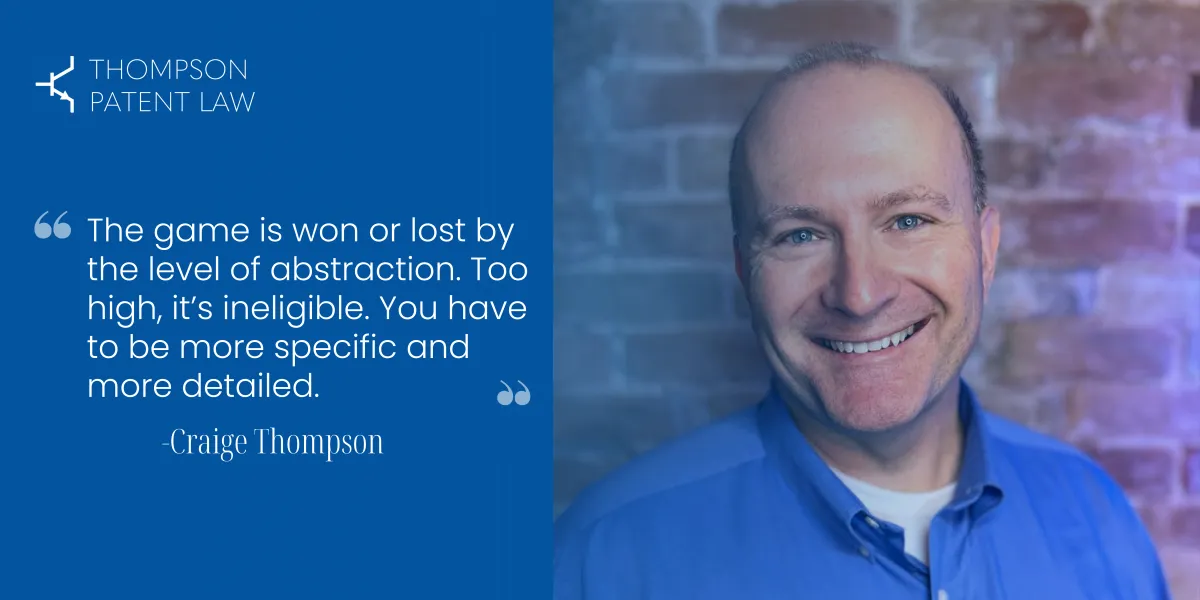
info@thompsonpatentlaw.com

6 Keys You Need So You Can Profit by Patenting Software: The DDR Secret Sauce - Crafting Claims that Pass the Alice Test (Post 4 of 6)
The DDR Secret Sauce - Crafting Claims that Pass the Alice Test
6 Part Series: 6 Keys You Need So You Can Profit by Patenting Software
This is the fourth in a series of 6 posts for decision-makers who are responsible for protecting high value, innovative software. If you missed the beginning of the series, click below so you can access the entire series and not miss any important or actionable insights for your business.
***Click here to jump to the start of this series***
The DDR Distinction:
In our last post, we looked at why Ultramercial's patent claims fell short of Alice's step one. Today, let's flip the script and explore why DDR Holdings v. Digital River stands as a beacon for software companies hoping to navigate the post-Alice patent maze. DDR's claims were "rooted in computer technology" and aimed to solve a problem "specifically arising in the realm of computer networks." What made DDR succeed where Ultramercial failed?
The Anatomy of a Well-Constructed Claim:
DDR's patent focused on retaining website visitors by generating hybrid webpages that presented third-party product information but maintained the look and feel of the host website. This was not a straightforward digitization of a business practice but a complex, technical solution to an internet-specific problem.
Elements to Consider for DDR-like Success:
Problem-Solution Fit: Your patent should address a unique problem specific to the computer or internet realm.
Technical Depth: Highlight the technological innovation that distinguishes your solution from existing practices.
Clarity: Ensure your claims are specific and clear, avoiding broad and generic statements that could be seen as 'abstract.'
The Buzzword to Remember: Preemption
The DDR case was lauded for its specificity; it didn't attempt to monopolize the idea of creating hybrid webpages. Instead, it detailed a particular method to do so, thereby avoiding a 'preemption' problem. In other words, the claims were specific enough that they did not block others from innovating in the same space.
Actionable Business Take-away:
To align your software patent application with the successful elements seen in DDR, focus on solving a unique, technical problem. Then, clearly articulate how your solution is distinct from conventional methods. Remember, specificity is your friend; it reduces the risk of claim preemption, which is crucial in passing the Alice test.
What’s Next:
We've discussed how to construct your patent claims, but how about the strategy behind choosing what to patent in the first place? The next post will dig into this aspect, offering you a roadmap for making strategic patenting decisions that maximize ROI. Stay tuned—you won't want to miss it!
Stay ahead of the curve by understanding what truly makes a patent application robust in the modern, post-Alice world. Keep an eye out for the next installment in this eye-opening series.
Ready to dive into the nuances of the Ultramercial decision and what it means for your patent strategy? Keep an eye out for the next installment in this series.
***To read the next article in this series immediately, click here now.***
P.S. If you want to learn even more about the correct ways to protect software with patents in the post-Alice era, check out Craige's Litigation Quality PatentCast here.
Click here to listen to Craige's PatentCast on Protecting Software with Patents